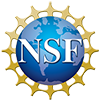MAXPD Mail-In Sample Information
After the shutdown, NSLS-II as a facility will start a limited mail-in/remote access experimental program for the summer (2020-2) cycle when the beamlines are recommissioned. It is important to note that the mail-in/remote experiment program is beamline dependent, and not all beamlines will be capable of offering this service right away. XPD, where the MAXPD endstation is located, is actively working on enabling a mail-in mode of operations, which includes potential high pressure experiments, but this program has not yet begun. Progress is being made, including the installation of remote cameras and the development of system monitoring software, with the end goal of being able to conduct a safe experiment from off site. The NSLS-II has instituted a facility-wide Remote Experiments Task Force to help advance this cause, and I am in regular contact with them to get our high pressure program involved with this initiative.
Only active beam time requests (BTRs) that can be run remotely (by beamline staff) will be considered for beam time at this time. Since staffing at each beamline is limited, the types of experiments that can be run will also be restricted. The beamline teams will be contacting users with active BTRs to work out the necessary details and safety considerations for any experiments that can be allocated this cycle. If you have questions about the 2020-2 cycle, or any ideas for potential mail-in experiments, please contact Matt Whitaker directly at matthew.whitaker@stonybrook.edu.
As the public health situation in New York State improves, Brookhaven Lab will slowly move to the next stages of operations. It remains likely at this point that no users outside of the authorized beamline staff will be permitted on site for the remainder of the 2020-2 cycle. It is unclear at present whether users will be permitted to return to BNL during the 2020-3 cycle, depending on the status of the pandemic and potential travel restrictions. We will do our best to keep the community informed of how these situations evolve with time.
Matt Whitaker, COMPRES beamline scientist
